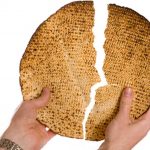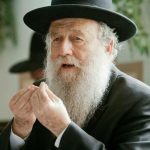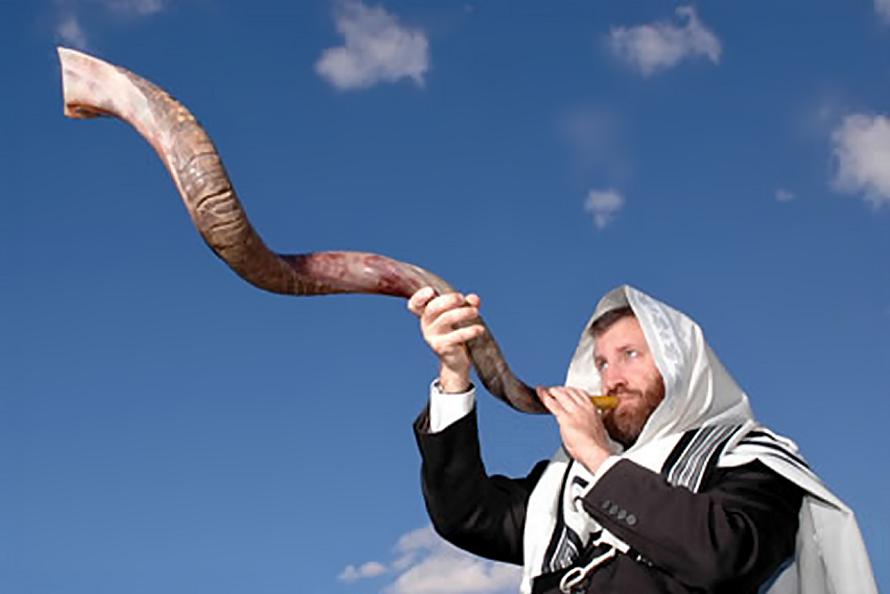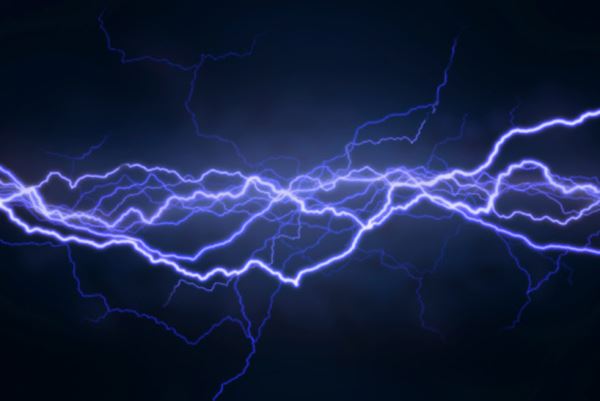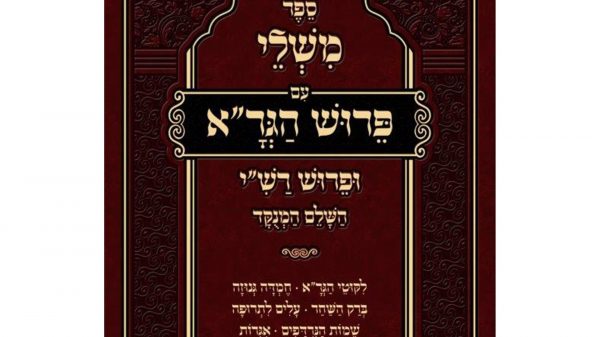Click here to download PDF
Special expanded edition marking the conclusion of Sheloshim for my mother Z”l
לע״נ אמי מורתי שולמית בת הרב דב יהודה ז״ל
Why didn’t Yitzchak see thru Eisov?
Yitzchak had a special affinity for Eisov and had fully intended to give him the special “Brachos” that Yaakov had to get seemingly by trickery. This is very hard to understand! Firstly, Rivka who saw the whole picture and preferred Yaakov should have shared her observations with Yitzchok as a wife and mother of their children. Secondly, Yitzhak was well aware that Eisov was spending his time hunting in the field as opposed to Yaakov who was spending his times in the Yeshiva of Shem and Eiver. He himself enjoyed Eisov’s hunting and quality meat. Thirdly, he knew that Eisov spoke rough and gruff as opposed to Yaakov’s gentle manner who always mentioned Hashem. That is why he was suspicious when Yaakov came in masquerading as Eisov. Yaakov spoke nicely and mentioned Hashem as granting him success, something which Eisov was not accustomed to doing. If Yitzchak was aware that Eisov spends his time hunting and is ‘unrefined’ in his speech, why did he have such a special affinity for him? Why didn’t he see him for who he was?
Wasn’t the Voice a dead giveaway?
When Yitzchak heard Yaakov’s refined way of speaking he became suspicious and asked Yaakov to approach to ‘feel him out’. He seemed to be satisfied by the fact that Yaakov had (fake) hairy arms. Yitzchak sums up the situation: “the voice is the voice of Yaakov and the hands are the hands of Eisov”. How could he be satisfied when clearly the voice is wrong and doesn’t match? Why wasn’t the voice and speech pattern a dead giveaway? Why was Yitzchak satisfied so long as the arms were hairy?
What’s with the “Field”?
Yitzchak smelled the fragrance that Yaakov had from the air space Gan Eden. Yitzchak exclaimed: “see that the smell of my son is like the smell of the “Sadeh”- field that Hashem has blessed him with”. What is Yitzchak’s fascination with the “sadeh”- field? Eisov is described not only as a hunter also as a “Ish-Sadeh”- a man of the field. The commentaries are a bit hard-pressed to understand what is being added by saying a “man of the field” because if he’s a hunter of course he goes out to the open field to hunt! What is being added by saying that he’s a “man of the field”? Yitzchak has some type of affinity for the concept of “field”. When Rivka is brought to him to be his wife he went out to the “Sadeh”- field and established davening Mincha. Chazal tell us that that “sadeh”- field was the Temple Mount and Yitzchak call the Temple mount a “Sadeh”-field as opposed to Avraham that called it “Har”- mountain. What is the significance of this? What is Yitzhak special affinity for “sadeh”- field and what is the meaning that Eisov is a “man of the field” asides from being a hunter?
Incomplete Blessings?
An interesting observation to make is that the Brachos that Yitzchak intended to give Eisov are incomplete! When Yaakov takes his leave of Yitzchak and Rivka to go to the house of Lavan Yitzchak gives him additional blessings. He imparts to him all the blessings of Avraham to be the next forefather of the Jewish people that Avraham started and to inherit the land of Israel. If Yitzchok originally intended to give these blessings to Eisov, why weren’t they included in brachos he gave Yaakov when he thought he was Eisov?
Yaakov wants this world?!?
At the beginning of the Parsha it says that “the boys were squirming around in Rivka’s womb”. Rashi’s second interpretation of this is that they were fighting with each other over the inheritance of two Worlds. What was the fight about? Seemingly Eisov would want this world and Yaakov would want Olam Haba – the world to come. At most we could imagine that Eisov would want it all, this world and the next (if he doesn’t have to work too hard for it) but why would Yaakov want this world? Both of them wanted both worlds! What did Yaakov want from this world?
What does Rashi mean?
Rashi (25:26) on the words “and then came out his brother [holding on to Eisov’s heel] writes as follows: “I heard a Midrash Aggada that explains this simply: it was by law that Yaakov was holding back Eisov [to stop him emerging from the womb first] Yaakov was “Notzar”-formed from the first drop [of Yitzchak’s seed] and Eisov from the second. Take an example from a tube that has a thin opening. Put in it two stones one under the other. The one that went in first will come out last and one at went in last will come out first. It comes out that Eisov was “Notzar”– formed last came out first and Yaakov that was “Notzar”- formed first came out last. Yaakov wanted to bar Eisov from emerging from the womb, so he should be born first just like he was “Notzar”- formed first and he’ll be the first one to come out of the womb and take the “Bechora”- first born rights by law.” This Rashi makes no sense! What is the significance of being “formed” i.e. conceived first? Seemingly nothing! Rashi says first one conceived is last one out. That doesn’t mean anything in Halacha! When bearing twins, the first born is the one that comes out of the womb first, not the one who comes out second – even though he was conceived first! The Halacha regarding all the laws of the first born hinge on who is born i.e. comes out of the womb first! Little infant Yaakov actually knows that himself and that’s why he tries to Bar Eisov from leaving the womb first! What is the meaning of what Rashi says that “Yaakov wanted to be born first just like he was ‘formed’ first”?
Adam’s two “Forms”
It is plainly obvious that originally both Yaakov and Eisov were both ‘Jewish’ and to build the Jewish people together. Why was it the original intent was that the third, final, and “B’chir she’b’Avos”-supreme of our forefathers, actually be two twins? it is well known that our three forefathers between them and culminating with Yaakov compensated for the sin of Adam and regained some of the levels that Adam lost. That is the secret that our forefathers are buried together with Adam and Chava in the “Mearas HaMachpela” and Yaakov per se “has beauty reminiscent of Adam’s beauty”. By the second account of the formation of Adam it says: “Vayiitzer Hashem” – Hashem formed Adam. Rashi comments on the word “Vayiitzer”, pointing out that it has two “Yuds” and says that it is to actually say that the formation is double: man is two “Yetziros”-forms. A “Yetzira”- form for this world and a “Yetzira”– form for the time of the Resurrection. By the creation of the animals that do not stand judgement it does not write by their formation two “Yuds” [meaning to say they only have one form – an Earthly form]. Why does Adam, and subsequently all those who are going to be the continuation of Adam’s original level, need “two forms”? Why can’t they use the same form for this world and the next?
Olam Hazeh vs Olam Haba
Our situation and function in this world are totally different from our situation and function in the next world. In this world we are meant to be challenged by temptation and all other tests that life brings. We need to be susceptible to those temptations and we need to have the capacity to also overcome them. This is very different from our situation and function in Olam Haba where we simply enjoy the “Aura of the Divine Presence” which is a revelation of the depths of Torah. In the next World we must be perfect and beyond being susceptible to temptations. On the other hand, no temptations will exist! The world around us will be perfect, there will be no work to be done, so to have the capacity to overcome challenges will be unnecessary! There are no Mitzvos in Olam Haba because there is no work to be done. It’s the time to enjoy the reward for a job well done. However, there is “Torah learning” in Olam Haba! Our whole connection to Hashem is through His Torah. It is His Will and Word. Our whole pleasure in the next world – that “Aura (Light) of the Divine Presence” is a manifestation of Torah on a higher level than what we can access in this world. This is why you will find that Torah is likened to “light”: “For a Mitzvahs is a candle and Torah is light” and in Aramaic Torah is called “Oraysoh” the root of the word being “ohr”- light. Torah is Divine Lights and that is the “Aura of the Shechina” that we enjoy in the next world. In other words: there are no actions in Olam Haba but there is thought- Torah! Because “man” lives in two different universes with different natural laws and different functions that’s why he needs two different forms! Currently our form for this world is active and dominant and our form for the world to come is in a recessive potential state. In the next world the form of that world will be dominant and active and the form from this world will just be subsumed and incorporated into it.
Voice vs Speech
“Kol”- sound/voice represents pure thought. Speech is intelligent, but speech is “strung together” by little bits of intelligence called words. Every word is a small idea and we piece the words together into sentences and paragraphs, oftentimes not adequate to capture and convey the thought. Pure thought is represented by pure unbroken Sound. The Nefesh Hachaim explains that the musical movements of the Torah are called “Taamim”-which also mean “reasons” which is the higher thought behind ideas. If you want to know what a person’s really thinking don’t just listen to his words, he might just be saying what etiquette demands. Listen to his tone of voice and you will be able to tell whether he’s really happy, or angry, serious, or cynical. This is the significance of the shofar and this is the significance that at Har Sinai they heard “Kolos”- sounds and the sounds then subdivided into speech. The “Kolos”-Sounds represents pure unmitigated thought and that’s “Kol Torah” and that was condensed into “Divrei Torah” words of Torah that have a concentrated meaning as opposed to the “Kolos” the pure thought that’s even above words represented by the pure unbroken sound. The unmitigated Torah learning of Olam Haba can be likened to “Kol Torah” whereas all our learning in this world is “Divrei Torah” only
Who’s First?
Which comes first, Olam Hazeh or Olam Haba? In physical actuality Olam Haba will be the world that we go to after this world and that’s why it’s called the “world to come”, because we haven’t been there yet. However, in thought and planning “last in action is first in thought”. Before beginning any project, even the planning, have a goal in mind. If you didn’t have a goal in mind you would have never started! The goal which comes at the end of all the actions is the first thing you thought of and motivated you. Hashem followed that pattern when creating the world. He created the world with the goal to bestow goodness and that goodness is Olan Haba. Olam Haba was the first thing Hashem “had in Mind” and it comes last in destiny. This means Man’s form for the next world was first in Hashem’s “thoughts! The Jewish people are the only ones that carry on that Legacy of Adam and that’s the secret of what Chazal mean by “you (the Jewish people) are called Adam the goyim are not called Adam”. The Mishna says: “All Yisroel have a portion in Olam Haba”, and we are created with that potential form that becomes actualized by the resurrection. “Bereishis”- in the beginning for the sake of the Jews that are called the first! That’s what it means when Hashem sent Moshe to Pharoh and said, “my first-born Israel”. we are Hashem’s firstborn in terms of we were “first in thought” and that is shared equally by all the Jewish people.
Kohen vs Talmid Chacham
Originally, the first born of this world get the “Kehuna” which is the “Avodah”, but because of the sin of the golden calf was taken from the first born and given to Levi. If not for that all first born’s would have been Kohanim. The kohen who does “Avoda” -Divine service (work) in the Beis HaMikdash has a lofty and indispensable function in this world when there are mitzvahs and hence “Avodas Hashem” to be done. The Talmid Chacham who clings to Torah in this world has a special “Deveikus” with Hashem somewhat like in (“Me’ayn”) Olam Haba because Torah is not just a mitzva- it’s the “Aura of the Shechina”. The Kohen is the ultimate and highest expression of Man’s “form” for this world, the Talmid Chacham is a “representation” (not in full actuality) of the “form” for the world to come.
Yaakov & Eisov – Adam’s two Forms
Yaakov was not going out to the field to work. He was in the Yeshiva of Shem and Eiver. That was always meant to be his position. He would be the ideological head of the Jewish people, charting their course their ideas and values. In other words: setting the tone (Kol) for the Jewish people. This is the significance that he was “Notzar”-Formed from the first drop. He is the first in thought that’s last in action. This is the secret that Rashi was revealing: The thin tube represents reality as we know it. First in thought is last in action Yaakov. Yaakov the “firstborn of thought” first thing in mind, the goal, which is Torah and Olam Haba. The one who gets the Privileges of the first born in this world is the one that enters this world first and that is the one who emerges from the womb first! The state of pregnancy is called “Hirayon” the root of the word is ”Hirhur”-thought and that’s why the act of becoming pregnant is even called in English conception. The person exists in concept at the moment of conception because the DNA map has been complete, but he’s not in physical actuality. Physical Life begins upon the emergence from the womb. For the Privileges of the first born in this world you must enter this world first, but the first born of this world is second in thought! The goal of Destiny is the one conceived first. If the partnership would have worked out Yaakov who was “Formed first” is the first in thought and representative of the “form” that becomes actual in the world to come. Eisov would be the one that is the root of the Jewish form in this world that does the Avoda – but not the end goal, and hence not first in thought i.e. not conceived first but enters physical reality first.
Secret of “Sadeh”
The “Sadeh”- field is a place of work, whether it’s agriculture per se or just the outside world where you do Commerce and industry. Yitzchak’s attribute of “Gevura”-might is the number one quality required to do “work” whether Divine service (“Avoda”) or earthly work. You need to be strong to overcome your own laziness and all the obstacles and conquer competitors that would get in your way. Yitzchak with his “Gevura” is particularly geared towards “Avoda”. Avraham saw the Temple Mount as a “Har”-mountain, something to aspire to. Yitzchak saw it as a “sadeh”- field, a place to work! “Avoda” – Divine service is what the kohanim do, it’s work and work is only done in this world – there’s no “field” in the world to come! This explains Yitchak’s fascination with “fields”. He is the only one of our forefathers that engaged in agriculture. The “field” was his view on life in this world a place to work – for Hashem, and everything l’shem Shomayim! Eisov is a “Ish Sadeh”– a man of the field a man who goes out to work and conquer. Eisov was a Mighty Man with the “Gevurah” that “Avoda” requires. Yitzchak saw in him the potential and all the proper characteristics for his original role as a kohen who does “work” in that “field” that is the Temple mount! Even if he is ‘slacking’ and not with the program, he still is the “Ish Sadeh”-man of the field – the man for the job! Yitzchak was not going to give up on him, he had hopes that Eisov would ‘get with the program’.
The Plan Yitzchak hoped for
When Yitzchak heard Yaakov’s “Kol”– voice coming out from a man with hands like Eisov he was satisfied. Hands are what we do work with. He was reassured that the synthesis is working out – Yaakov is “setting the tone” (literally and figuratively) for the ideas and the ideology, and he heard that in Eisov “talking like Yaakov”. Hearing Yaakov’s voice in a body that has Eisov’s hands was music to his ears! That was supposed to be the Dual Legacy Yaakov providing the “tone” of the Jewish people and Eisov being the one that follows through and does work based on that those ideas and values
The fight in the womb
They did not want to work together, even in the womb. They knew that this would not work out and one will have to buy out the other. The two worlds are interdependent because you can’t get to Olam Haba without Olam Hazah and Olam Hazeh is meaningless if it doesn’t have the higher goal of getting to Olam Haba. They were fighting each other to have both worlds which are interdependent and parallel to the two halves of Adam, the form for this world and the form for the next. That’s what it means that Yaakov wanted to hold him back from leaving the womb first just like he was conceived first. Yaakov knew he would fulfill its function of being the “first in thought” to be the form that goes dominant in the world to come. He didn’t trust Eisov to do his job and be the form of this world, so Yaakov wanted to be both the form of Olam Haba and the form of this world that is born first. He couldn’t trust Eisov to do his “job”.
Birkas Avraham – Yaakov’s intended legacy
The blessings that Yitzchak gave you Yaakov while thinking he was Eisov were all the Bounty of this world because that’s all he wanted to give Eisov -the Bounty of this world which includes having a sovereign Kingdom. Yitzchak never meant to give Eisov the “blessings of Avraham” to be the leader of the chosen nation and with that comes the land of Israel. That was always meant for Yaakov! That was the blessing intended for the ideological leader of the Jewish People – the one who leads us to our final destination that was first in thought!


